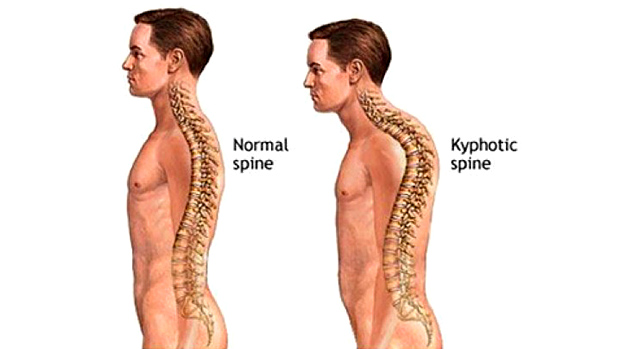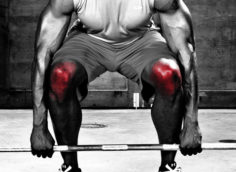What is Kyphosis?
Kyphosis is a term that refers to an exaggerated rounding of the back, specifically the thoracic portion of the spine. This condition is commonly accompanied by pain, tightness, or burning between the shoulder blades and neck as well as other pain symptoms in other parts of the body.
As a posture specialist, I see this condition in people of all ages today, including teens. I've successfully reversed this condition with myself and have helped many clients resolve kyphosis. If you're dealing with it, first understand that kyphosis (with very few exceptions) is not a disease. In most cases, it's not something you're stuck with. Even if it's genetic and your parents and grandparents were hunched over in their later years, that doesn't mean you have to live a life of being hunched over yourself.
To reverse this condition, you'll have the most success if you fix the underlying source of the problem instead of just trying to fix the problem itself. The real culprit is usually lack of movement, which over time leads to muscle weakness, skeletal misalignments, joint instability, and in this case, a hunchback. Even if you work out 5 to 6 days a week, you still most likely don't move enough.
The Most Important Thing to Remember
Bones do what muscles tell them to do. The spine is in the position that it's in because the surrounding muscles are holding it there. The position of the spine can be changed. This can be done without getting adjusted, without excruciatingly painful massages, without pins and needles, and without surgery.
Kyphosis is just a small piece of the bigger picture. The spine will, for the most part, do what the hips tell it to do. The powerful muscles of the pelvis are the main locomotors of the human body. They dictate the position and functionality of the entire spine and shoulder girdle. In order to permanently reverse kyphosis, you need to not only restore mobility and function to the thoracic spine, but also restore strength and function to the pelvis – and the entire body for that matter!
This photo on the left was taken of me when I was dealing with chronic hip pain at age 27. My head is in front of the plumb line and my thoracic (upper) back is rounded forward.
The photo on the right was taken recently, approximately 8 years later. Today my hip is totally pain free and I've regained full range of motion in my hips and spine. How was I able to correct my posture and maintain the positive changes to my alignment? By practicing daily corrective stretches and exercises.
Fix Kyphosis: The Exercises
There are three thoracic-opening exercises that can make a big difference in your posture. If you choose to try them, use common sense and discontinue any exercise that doesn't feel right for you.
Counter Stretch
- Stand facing a table or counter that's about waist to chest high. Place your hands on it and walk your feet back so that your feet are under your hips.
- Look at your feet and make sure they're straight or even slightly pigeon-toed or turned inward (this is really important). Kick your buttocks/hips back to place an arch in your lower back and move your chest down towards the floor. Keep your elbows locked out and tighten your quads.
- Breathe and hold for 1 minute. Make sure to keep the weight distribution in your feet equal.
This exercise will promote extension in the thoracic spine, which is usually hunched or rounded forward in flexion with kyphosis.
Static Extension Position
- Start on all fours with your wrists under your shoulders and your knees under your hips.
- Walk your hands out in front 6 inches, then shift your body forward so that your shoulders stack right over your wrists. Your hips should now be about 6 inches in front of your knees.
- Spread your fingers, keep your elbows locked out straight, and allow your shoulder blades to collapse together. Let your head hang – it's important to allow your neck to release here. Relax your stomach and allow your low back to arch.
- Hold for 2 minutes. Don't let your elbows bend.
This exercise brings the shoulders back into retraction and puts the spine into extension. This is a challenging exercise. You'll feel a lot of work going on in your shoulders, forearms, and wrists. Hang in there, it'll be worth it when it's over.
Upper Spinal Floor Twist

- Lie on the floor on your side with your knees and hips bent to 90 degrees and your arms stacked straight out in front of you.
- Hold your knees together with your bottom hand and open up your top arm towards the floor behind you.
- Turn your head to look in the direction of your top arm. Keep your knees stacked and breathe! Hold for 1-2 minutes on each side.
The biggest mistake people make in this exercise is they allow the knees to come apart. Don't let this happen. You need the upper body to rotate independently of the hips here, and if the knees slide apart you're essentially cheating by letting the top hip move.
This exercise will promote mobility in the thoracic spine and shoulders. Enjoy this one, it feels great.
Do It Daily
Now here comes the tough love. If you want to get better, you have to work this condition away. You have to be very proactive, every single day, for the rest of your life. Gravity does not stop. If you have a kyphotic spine, your body already has a tendency to trend downward.
You must strengthen key muscles of the hips and spine, then keep them strong. Then you need to move more and continue to incorporate more movement into your day-to-day life in order to give your musculoskeletal and nervous systems the stimulus they need to stay upright and healthy.
Note: These exercises will make you feel and look much better, but for many people they're just a start. Check out the book, "The Egoscue Method of Health Through Motion" by Pete Egoscue, for an in-depth look at the issue.








